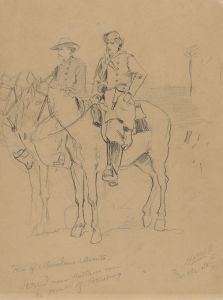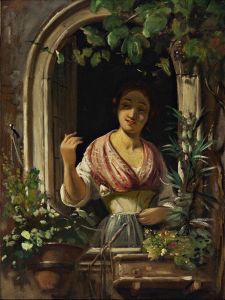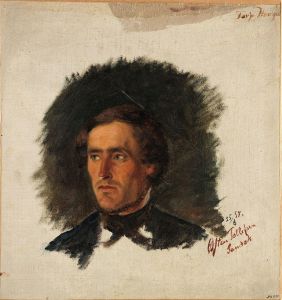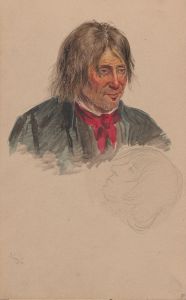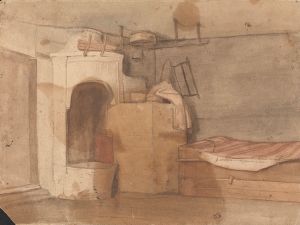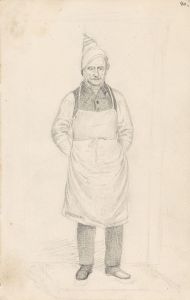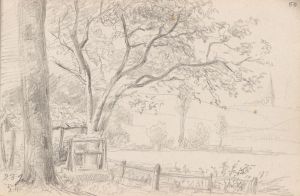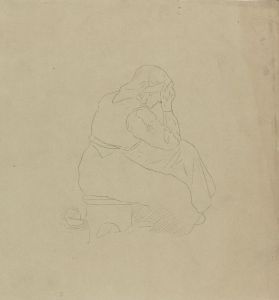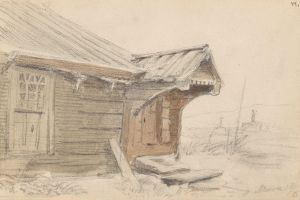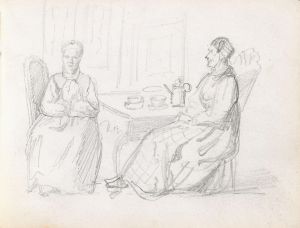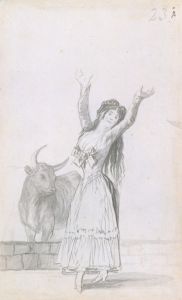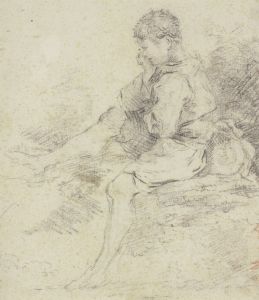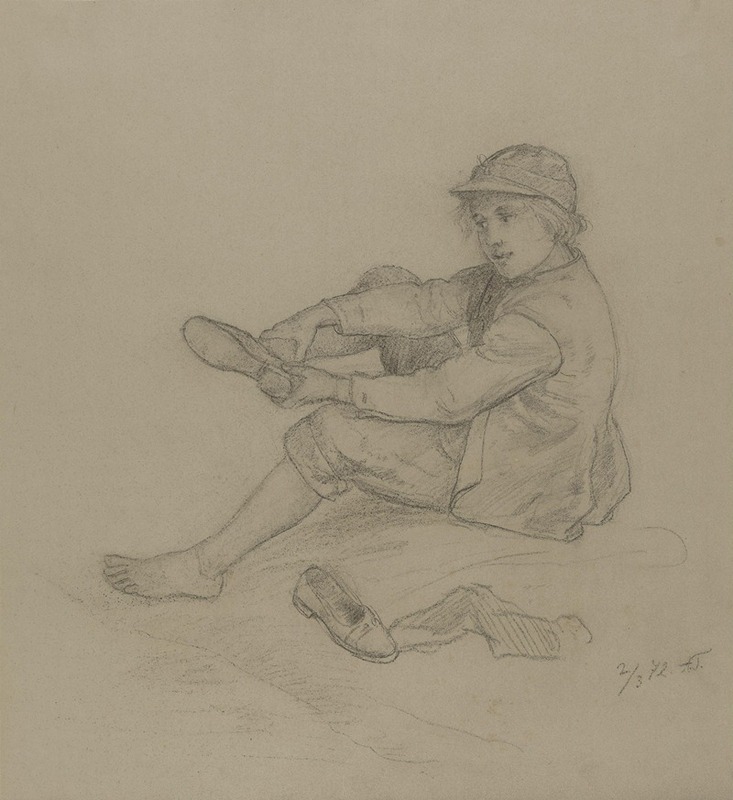
Sittende gutt som tar av seg skoen
A hand-painted replica of Adolph Tidemand’s masterpiece Sittende gutt som tar av seg skoen, meticulously crafted by professional artists to capture the true essence of the original. Each piece is created with museum-quality canvas and rare mineral pigments, carefully painted by experienced artists with delicate brushstrokes and rich, layered colors to perfectly recreate the texture of the original artwork. Unlike machine-printed reproductions, this hand-painted version brings the painting to life, infused with the artist’s emotions and skill in every stroke. Whether for personal collection or home decoration, it instantly elevates the artistic atmosphere of any space.
Adolph Tidemand was a prominent Norwegian painter in the 19th century, known for his detailed and realistic depictions of Norwegian folk life and traditions. One of his lesser-known works is "Sittende gutt som tar av seg skoen," which translates to "Sitting Boy Taking Off His Shoe." This painting is a fine example of Tidemand's ability to capture everyday moments with a sense of authenticity and attention to detail.
Adolph Tidemand was born on August 14, 1814, in Mandal, Norway. He studied at the Academy of Art in Copenhagen from 1832 to 1837 and later continued his studies in Düsseldorf, Germany, which was a significant center for art at the time. Tidemand became associated with the Düsseldorf School of painting, which emphasized detailed and realistic portrayals of subjects, often with a focus on historical and genre scenes.
"Sittende gutt som tar av seg skoen" is characteristic of Tidemand's interest in genre painting, which involves scenes from everyday life. This painting depicts a young boy in the process of removing his shoe, a simple yet intimate moment that reflects Tidemand's focus on capturing the essence of rural Norwegian life. The boy is seated, and the composition is likely to be intimate, drawing the viewer's attention to the boy's actions and expressions.
Tidemand's work often highlighted the cultural and social aspects of Norwegian life, and this painting is no exception. By choosing to portray a mundane activity, Tidemand elevates the ordinary to a subject worthy of artistic exploration. This approach was part of a broader 19th-century trend where artists sought to document and celebrate the lives of common people, reflecting a growing interest in nationalism and cultural identity.
The painting's style is consistent with Tidemand's other works, which are known for their meticulous attention to detail and realistic representation. His use of color, light, and shadow would have been employed to enhance the realism of the scene, making the viewer feel as though they are witnessing a genuine moment in time.
While "Sittende gutt som tar av seg skoen" may not be as widely recognized as some of Tidemand's other works, such as "Haugianerne" or "Brudeferden i Hardanger," it nonetheless contributes to his legacy as a painter who was deeply committed to portraying the life and culture of Norway. Tidemand's paintings are valuable historical documents that offer insights into the customs, clothing, and daily activities of 19th-century Norwegians.
Adolph Tidemand's influence on Norwegian art is significant, and his works continue to be celebrated for their cultural and historical importance. His ability to capture the spirit of Norwegian life in his paintings has made him a beloved figure in the history of Norwegian art. "Sittende gutt som tar av seg skoen" is a testament to his skill in rendering the ordinary with extraordinary care and attention, making it a noteworthy piece in his body of work.






